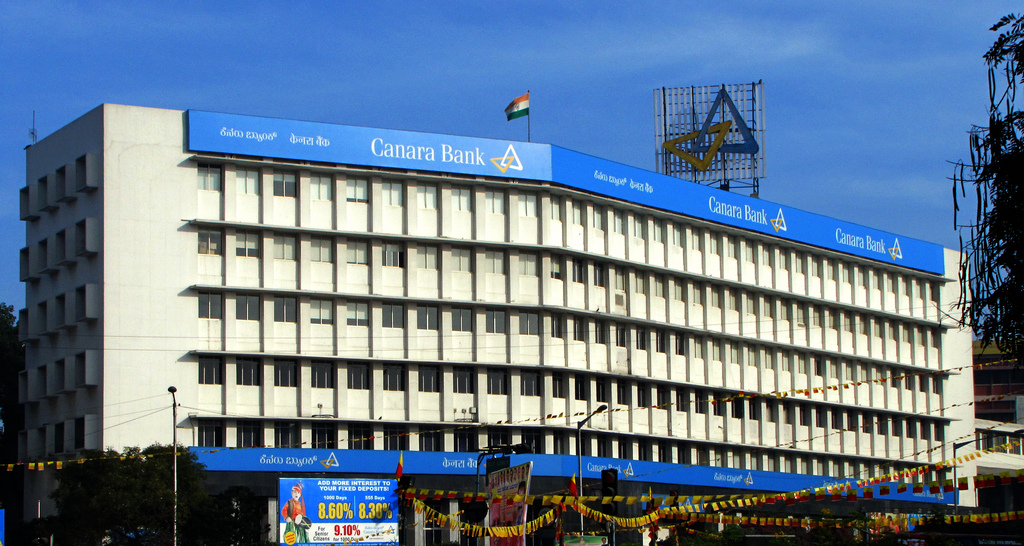Mumbai: State-owned Canara Bank on Wednesday reported a healthy set of numbers with net income rising nearly 27 per cent to Rs 3,659 crore in the December 2023 quarter, boosted by lower credit cost and higher interest income.
The Bengaluru-based lender’s net interest income exceeded the target and rose by 9.50 per cent to Rs 9,417 crore, while credit cost declined to an impressive 24 basis points (bps) to 0.97 per cent, chief executive K Satyanarayana Raju told reporters.
He also said the bottom line was boosted by a healthy improvement in asset quality, with the gross bad loans falling by 150 bps to 3.39 per cent and the resultant fall in net bad loans which improved by 64 bps to 1.32 per cent during the reporting quarter.

The bank’s provision coverage ratio stood at 89.01 per cent, improved by 269 bps, taking the core capital to 15.78 per cent.
Net interest income stood at Rs 9,417 crore, up 9.50 per cent, and net interest margin improved by 9 bps to 3.02 per cent.
While credit grew at 9.7 per cent, deposits grew by 12.5 per cent, which would have been even higher, had it not been a poor show by the low-cost CASA (current accounts savings accounts) deposits which inched up by just 5.5 per cent.
Credit growth was led by non-corporate books which constituted as much as 58 per cent of its overall assets, and grew by 14.5 per cent to Rs 5.35 lakh crore.

Sector-wise, retail loans grew 12.14 per cent, agri 19.26 per cent, MSME 10 per cent, housing 12.07 per cent, and auto 13.2 per cent.
The bank’s personal loan book stood at Rs 9,100 crore with 1.2 per cent bad loans, home loan book was Rs 91,800 crore and auto loan size at Rs 16,960 crore.
Raju said the bank has fully provided for the 17 per cent wage hike to its employees till December 2023, setting aside Rs 7,000 crore for wages and almost the entire amount for retirement and other benefits.
On the impact of the November 21, 2023 RBI circular on increased risk weighted capital provision, he said this led to a 52 bps charge on the capital but after adjusting for internal accruals the net impact was only 42 bbs.

However, he said, there is no dip in demand from NBFCs nor the bank has any plan to curtail its lending to non-banks. We will only ensure that we will continue to lend to those NBFCs which can take in the money at the higher rate because we will not be lending at a loss or after a hit on our margins.
Raju said the bank’s NBFC book stood at Rs 1,35,000 crore in the reporting quarter, which was Rs 1,39,000 crore in the year-ago period and was much higher at Rs 1,43,000 crore in the September quarter.
On the slippages side, he said at Rs 3,000 crore, this was much lower than the target of Rs 5,000 crore and the fresh stress came in mostly from the RAM (retail, agriculture and MSME) book with Rs 1,200 crore from MSME alone.

The bank recovered Rs 16,051 crore during the quarter compared to Rs 11,092 crore a year ago and has written off Rs 3,900 crore.
The bank’s global business stood at Rs 22,13,360 crore, up 9.87 per cent, of which gross advances rose 11.69 per cent to Rs 9,50,430 crore. Global deposits stood at Rs 12,62,930 crore and global advance at Rs 9,50,430 crore.
Domestic deposits stood at Rs 11,66,848 crore, up 8.07 per cent, and domestic advances increased 12.56 per cent to Rs 9,01,465 crore.
PTI
